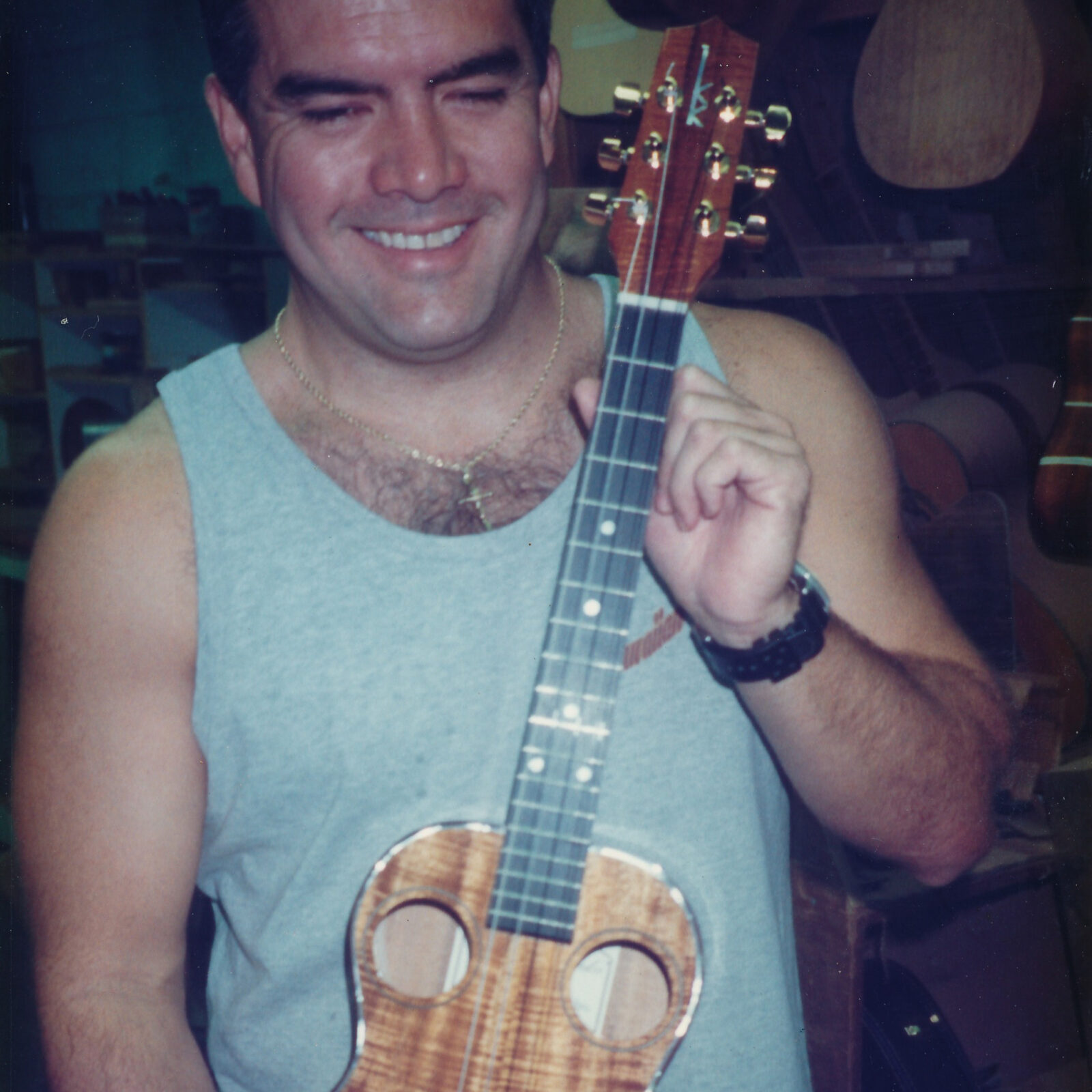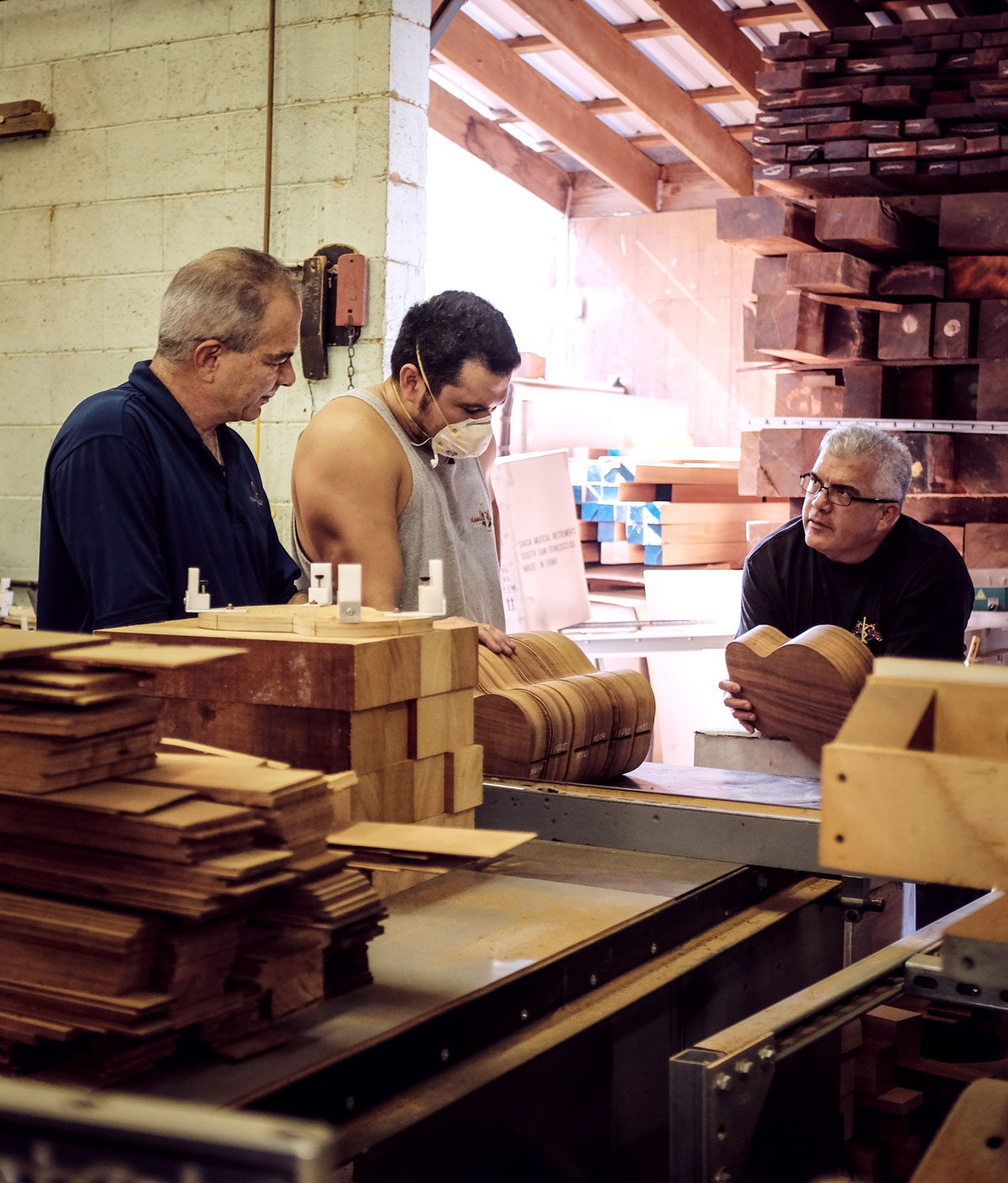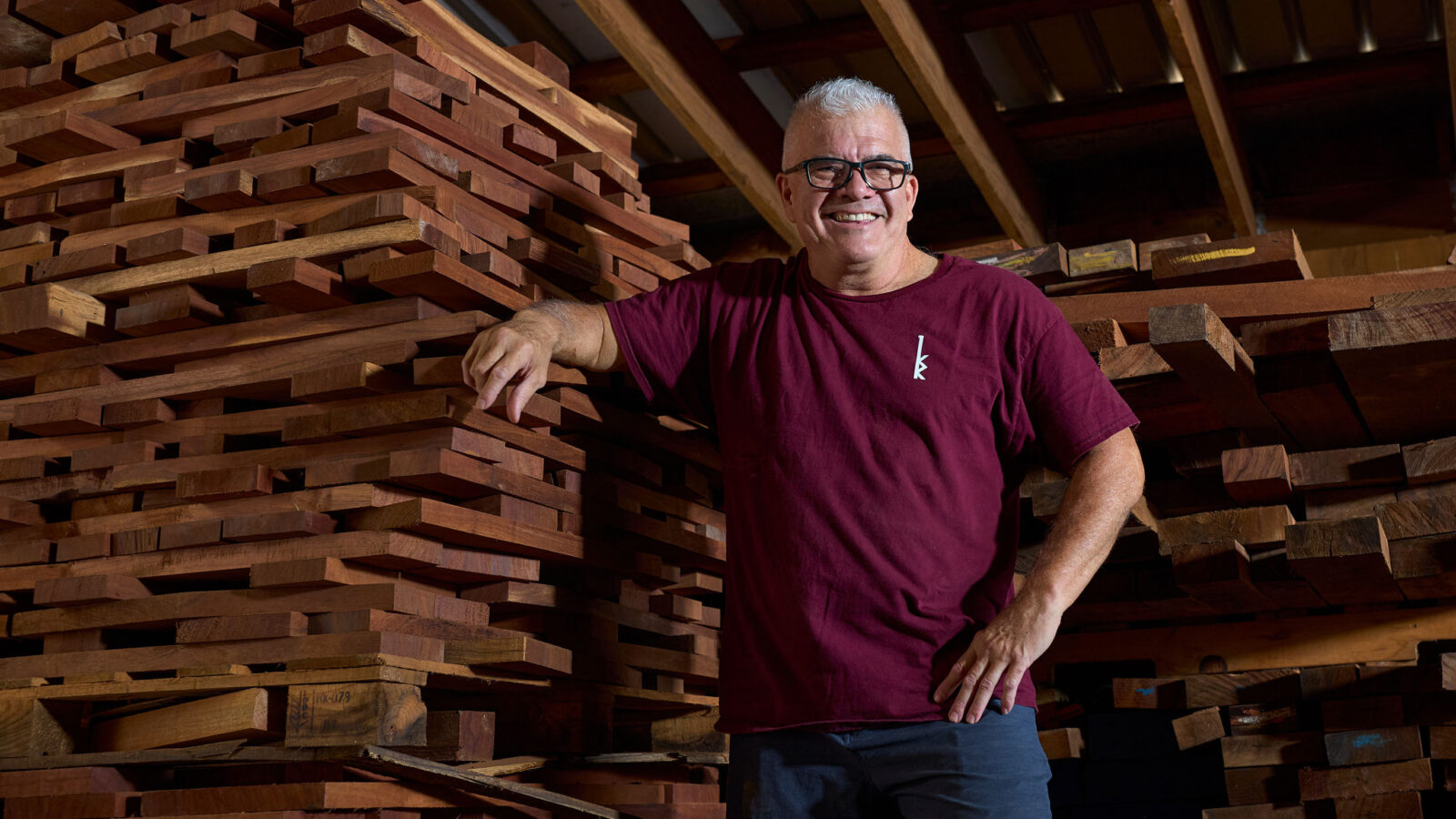Artistry
Making a Masterpiece
Every Kamaka ukulele is a work of art that resonates with the sound and soul of generations of Kamaka craftsman. Each instrument is touched by 20 pairs of hands before leaving the factory.
Like Father, Like Son
As a boy, Vice President and Custom Luthier Casey Kamaka fondly remembers helping out at the Kamaka factory on the weekends and then going out to eat in Honolulu’s Chinatown with his father, Sam Kamaka Jr., at the end of the work day. It was at age 13, while Casey attended middle school, that he started working at the factory during the summer and began learning the craft of ukulele making from his father. When he was a freshman in high school, he completed his first ukulele, handcrafting the instrument through every phase of the process. After graduating from St. Louis School in Honolulu, Casey attended UH Mānoa, graduated from flight school, and earned a degree in aeronautical science from Embry-Riddle Aeronautical University.
He began flying for Aloha Airlines and later Hawaiian Airlines where he continues to fly today with nearly 40 years of experience as a commercial pilot. While flying, Casey never stopped practicing his craft, staying close to the family business and continuously handcrafting ukuleles as well as mentoring his nephew, Christopher Kamaka, Jr., the fourth generation of Kamakas to build ukuleles and learn the family trade from the ground up.

Photo of Young Casey

Sound with Soul
“Mother nature creates the trees and we’re fortunate enough to use this palette to craft our ukulele,” he says. When building ukuleles, Casey learned, from the deaf craftsman who worked at Kamaka Hawaii, how to use all of his senses to create an instrument that resonates from the soul. For more than 50 years, Kamaka Hawaii employed deaf craftsmen who learned from Sam Kamaka Jr. how to build the highest quality instruments even though they couldn’t hear the sound of the ukulele. “They would tap the instrument and feel the vibrations in the wood, and they would know if the sound was good,” says Casey. They would smell the wood and could tell if there was too much moisture in the wood and if it needed to be dried longer to ensure the highest quality sound.”
Casey’s continuous pursuit of artistic perfection led him to research other instrument factories to learn about their manufacturing processes. He specifically sought ways Kamaka Hawaii could innovate and build modern processes into its ukulele production while still maintaining the company’s century-long tradition of handcrafted excellence. With higher demands for their ukulele, Casey found ways to efficiently increase ukulele production by modernizing Kamaka ukulele crafting. His years of experience as a luthier made it possible for him to understand where these efficiencies would make the most sense at Kamaka Hawaii and when only hands could accomplish the true artistry of a Kamaka ukulele.
—casey kamaka
Casey’s first love is crafting custom ukuleles that reflect the taste, personality and playing style of the musician. Inspiration strikes at all hours so he’s always ready with a pen to sketch an instrument idea (napkins have come in handy at times) and fine tune every detail after spending lots of time consulting with the player to ensure the ukulele is the perfect blend of artistry and playability.
“When starting the process of creating a custom ukulele, I ask a lot of questions,” says Casey. “What type of music do you play? Are you a strummer or a picker? Do you play hard or do you prefer a nahenahe (soft and melodious) style of playing?” The most important step when handcrafting a custom ukulele is understanding the musician’s desired sound.
“Everyone’s ear is different,” says Casey. “What I hear is different from someone else and the way someone explains what they hear can be different, too. Figuring out exactly how the musician wants the instrument to sound is the hardest part.” For every custom instrument created, Casey works hard to make sure the sound of the ukulele is exactly what the artist wants. “It’s about listening to them and finding the best materials to create an instrument that produces the quality sound and tone the artist wants to hear every time they play.”
After determining the ukulele’s sound, Casey recommends specific materials and combinations to create the exact look and feel of the custom instrument that accurately captures the artist’s preferences and personality. “Inlays are personal. It’s usually something special that means a lot to the player.”
To Casey, crafting a Kamaka ukulele is about chasing perfection and creating a unique work of art. “I like to see the tree when it’s first cut so I can see how it will dry over the next five years,” explains Casey. “From there, we cut it and see what it does. I can feel how heavy it is and know how the wood will move. Every time we touch it, we put a piece of our soul in it. That’s what makes a Kamaka ukulele so special.”

